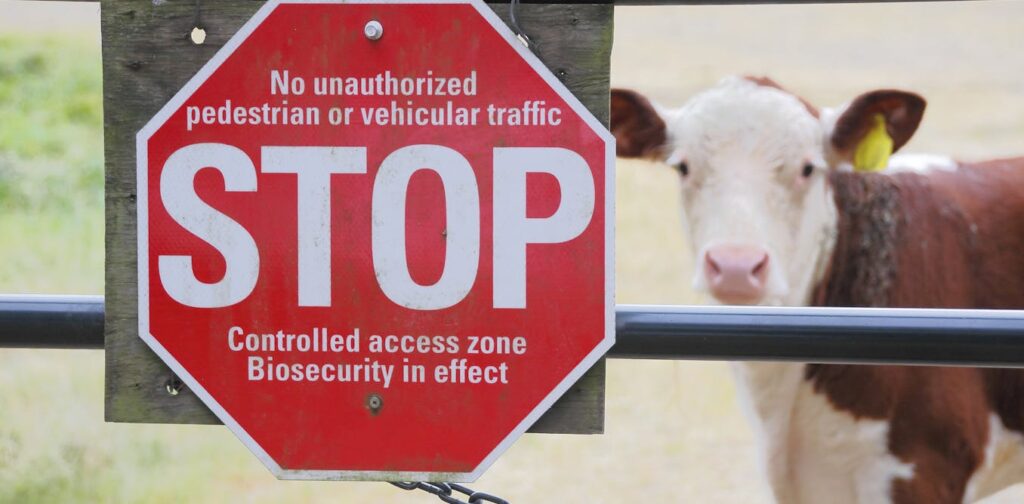
Foot-and-mouth disease, a seemingly innocuous term, conceals one of the most economically devastating threats to livestock worldwide. This highly contagious virus, when infecting cattle, leads to painful blisters, reduced milk yields, and significant declines in overall health. While sheep and other cloven-hoofed animals can also be affected, cattle suffer the most severe consequences.
Australia has managed to remain free of this disease since 1872. However, the recent arrival of foot-and-mouth disease in Indonesia has heightened concerns, prompting new biosecurity measures. The potential introduction of the virus to Australia could severely impact livestock exports, especially as the government considers allowing beef imports from the United States. The stakes are high for graziers, who fear the economic fallout.
The Threat of Foot-and-Mouth Disease
The virus responsible for foot-and-mouth disease is notorious for its contagiousness. Unlike many infectious animal diseases that require close proximity for transmission, this virus can spread through the air and persist on surfaces for extended periods. The widespread damage it inflicts on animal health, milk production, and fertility makes it a significant concern for major farming nations like Australia.
Australia’s status as a nation free from major animal diseases is crucial for its livestock export industry. An outbreak of foot-and-mouth disease would jeopardize this status, leading many countries to halt imports of Australian animals and products to protect their own herds. The economic implications are stark, as demonstrated by the 2001 outbreak in the United Kingdom, which resulted in the culling of over six million animals and an estimated A$16 billion in damages.
“If foot-and-mouth entered Australia, it would devastate the export trade.”
Innovative Vaccine Solutions
In response to the looming threat, a new locally-produced mRNA vaccine offers a promising solution. Unlike traditional vaccines, this mRNA vaccine can be tailored to specific viral strains, allowing for rapid response to outbreaks. If proven safe and effective, it could enable authorities to quickly vaccinate animals in a ring around any detected outbreak, potentially containing the virus’s spread.
However, preemptively vaccinating Australia’s 30 million cattle remains unlikely. Preemptive vaccination could complicate the detection of an outbreak and affect the nation’s disease-free status. Moreover, immunity from the vaccine tends to last less than a year, and the virus’s numerous strains pose challenges for comprehensive protection.
Strategic Response to Outbreaks
Should foot-and-mouth disease breach Australia’s defenses, the primary objective would be rapid eradication. Early detection and containment would involve locking down animal movement and culling affected herds. In the event of a wider outbreak, authorities would need to implement a multifaceted strategy, including vaccination, movement restrictions, and culling, to create barriers against the virus’s spread.
Existing overseas stockpiles of foot-and-mouth vaccines could be accessed in an emergency. However, the new mRNA vaccine represents a significant advancement due to its local production and the adaptability of mRNA technology, which allows for quick adjustments to match new strains.
“mRNA technology offers the ability to rapidly tweak vaccines to match new strains.”
Looking Forward: Biosecurity and Innovation
While the new vaccine is a welcome development, it is not a panacea. Australia’s robust biosecurity measures have long protected its agricultural export industries. Enhanced by technology, these measures include one of the world’s most advanced livestock tracking systems, where each cow is tagged with a unique ID that records its movements throughout its life.
This tracking data is invaluable during an outbreak, enabling authorities to trace the paths of infected animals and identify potential exposures. The combination of vaccines, culling, and advanced tracking systems may seem excessive, but the threat posed by foot-and-mouth disease cannot be underestimated.
As Australia navigates these challenges, the integration of innovative solutions like the mRNA vaccine with existing biosecurity frameworks will be crucial in safeguarding its livestock industry and maintaining its disease-free status.







